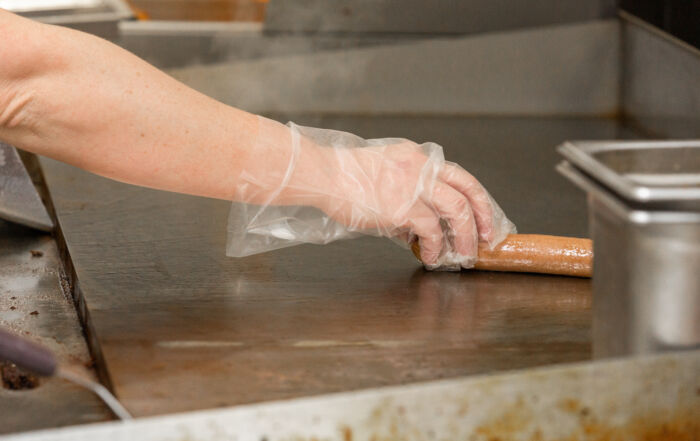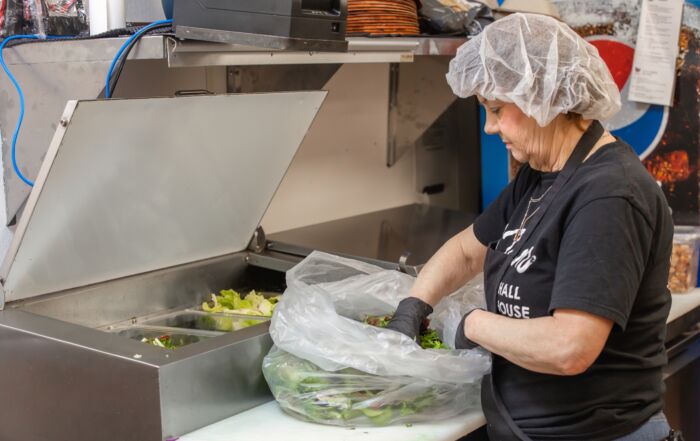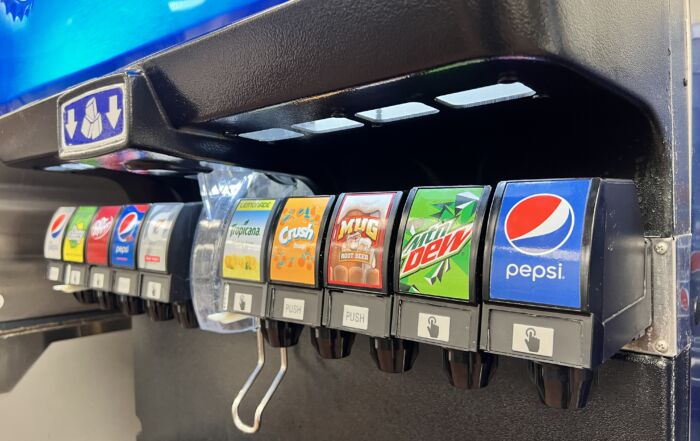Fresh and Tasty Produce, but are there Food Safety Concerns?
One of the best things about the middle of summer is the wonderful variety of tasty fresh produce that is available. I hope you are enjoying the fruits of the harvest because it has great flavor and provides us with a variety of important vitamins, minerals, and fiber needed to maintain good health.
Unfortunately, there are also some food safety risks that come with all of the good qualities of fresh produce. Just this year, we have heard the stories of E. coli in romaine lettuce and several cases of foodborne illness due to a parasite (Cyclospora) in fresh cut vegetables and salads sold in quick service restaurants and grocery and convenience stores. In recent years, we have also seen outbreaks related to tomatoes, sprouts, strawberries, and cantaloupe. Salmonella, Hepatitis A, Listeria, and E. coli have been prevalent pathogens involved. In fact, a study by the CDC
which reviewed reported outbreaks of foodborne illness over a ten year period found that 46% (almost half!) were from produce or nuts.
Why does produce present risks? There are several key reasons that food safety is a risk in fresh produce. First, the growing conditions contribute to risk. Produce is often grown in soil, and soil inherently contains bacteria. Fruits and vegetables need water for growth, and water is often a carrier for contaminants. Because produce is grown outside, there is a possibility of contact with birds and animals (and their droppings) that harbor bacteria and parasites. Second, produce is often consumed raw, and when there is no heat treatment, bacteria are not killed. Third, contamination on produce is difficult to remove when present. Fourth, there are physical characteristics of produce that contribute to retention of bacteria—rough surfaces, folds, crevices, stems, etc. Produce also is prone to bruising, small cuts, or scarring that can allow bacteria to enter the product. Finally, produce is susceptible to human contamination and abuse along the path from farm to fork. That is why the health of workers and their hygiene practices are critical. Post-harvest processing can be a source of contamination/growth if holding temperatures are not controlled (after all, peak harvest comes in the hot months of summer) and if wash water is not clean.
As part of the Food Safety Modernization Act, the Produce Safety Rule addresses these risk factors and now requires larger growers and wholesalers to implement control measures. However, many small to mid-size produce operations are exempt, which means that the foodservice buyer has to be knowledgeable.
In today’s blog, I am going to provide general risk mitigation strategies for fresh produce that should be in place in all foodservice operations. Key guidelines include:
- Follow standard operating procedures (SOPs) based on best practices for handling produce at each step in the flow of food: purchasing, receiving, storing, preparing, and serving. If your operation doesn’t have written guidance for staff to follow, check out the archived FoodHandler SafeBites webinar SOPs to get started
- Purchase produce from approved sources and ask about the food safety practices and controls used to protect the produce from the farm to your foodservice. There are many checklists (such as one available at ncrfsma.org) that can guide the conversation if working with local growers; these checklists can provide documentation to demonstrate reasonable care was taken to ensure produce was safely grown, harvested and delivered to your foodservice.
- Receive food at the proper temperature. Temperature control for produce is important, especially for pre-cut products.
- Check the quality of produce delivered. Make sure that there is minimal bruising or damage to the product. If it does not meet standards, reject it. Many of the factors that affect quality will impact safety so think of it as a win-win for your customers.
- Monitor storage temperatures. All cut produce should be stored at 41oF or below. Other produce may be stored at that temperature, but some produce items are sensitive to cold (ie. bananas or basil).
- Date produce as you put it in storage.
- Prevent cross-contamination during storage by placing produce above non-cooked foods or in a separate area and keep it protected from bruising or contaminants. See Refrigeration-Storage-Chart
- Rotate produce, typically using the first in-first out (FIFO) method or monitor degree of ripeness or package dates if a pre-cut item.
- Wash hands using proper technique before handling produce.
- Wash produce (even those items with a rind or inedible skin) just prior to use. Many people don’t think it is necessary if the outer peel is not eaten, but it is because the knife will cut through and then contaminate the edible portion.
- Wash produce under running water or alternate approved method (DO NOT soak produce or store in standing water).
- Use a designated produce sink. If that is not available, clean and sanitize sink prior to using for produce.
- Use a designated vegetable brush for cleaning cantaloupe (the webbing on the outside harbors bacteria!).
- Let product drain thoroughly.
- NOTE: There is no need to rewash packaged produce that is labeled “ready-to-eat”, “washed”, or “triple washed”. Washing again may introduce contamination. And there is no need to invest in produce cleaners or use in house products such as vinegar as the research shows no difference in pathogenic load reduction between these and water, and the texture of some produce may be damaged with addition of acid.
- Wear disposable gloves when preparing the produce.
- Wash hands before putting on disposable gloves.
- Change gloves when contaminated and when changing tasks.
- Never wash or reuse disposable gloves.
- Avoid cross contamination.
- Wash and sanitize work surfaces, including cutting boards.
- Use clean and sanitized knives for cutting produce.
Don’t let food safety concerns limit your eating and serving fresh fruits and vegetables. Remember, they can be safe to eat when good food handling practices are followed. This might be a good time to conduct an in-service training with employees to remind them of why it is important to follow the SOPs in your operation. Engage the staff with some culinary how to’s on preparation of specific produce items, or encourage their input on new menu items to feature. Involve your team in planning production schedules to minimize time in set up of work areas when washing and preparing fresh produce items.
In our next blog, we will discuss special handling procedures for the most risky fruits and vegetables and how to improve the safety of salad bars.
READ MORE POSTS
Maintaining Food Safety Standards Amid Seasonal Turnover
Across the country, summer seems to bring on more than just an influx of business [...]
When Temperatures Rise, Keep Food Safety Top of Mind
Summer brings a welcome increase in business for many restaurants, catering services, and event venues. [...]
Safely Shopping at Farmers’ Markets: A Food Safety Guide for Foodservice Operators and Chefs
Farmers’ markets are an appealing source of fresh, local, and seasonal ingredients for individuals and [...]
Ice Machines, Beverage Dispensers & Other Overlooked Food Safety Hazards
At the end of the spring semester in our campus food production lab, we’re fortunate [...]











